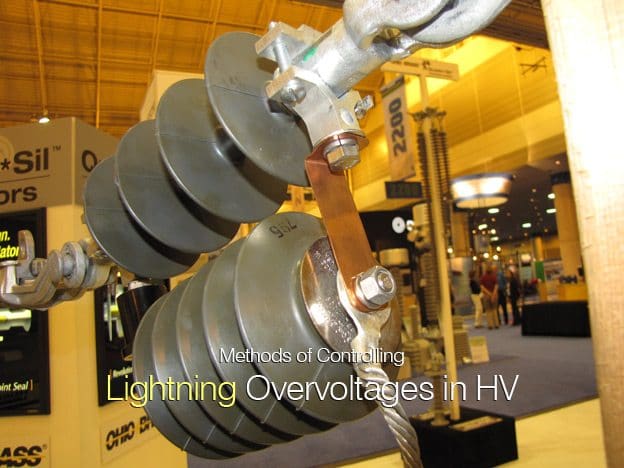
Hubbell's improved protecta-lite transmission line arrester line has been simplified with fewer parts and less risk of parts wearing out. Several steel plated components were replaced with one copper strap. The strap makes installation easier and reduces the wear points. Vibration and wear are more important on transmission line arresters due to the fact that they are more exposed to wind and vibration.
Introduction
For well shielded transmission lines, the backflashover condition, close to the substation, is of prime concern for determining the location and number of surge arresters required to achieve insulation coordination of the substation for lightning surges.
The risk of a backflashover can be reduced by keeping the tower foot impedances to a minimum, particularly close to the substation (first five to seven towers).
The terminal tower is usually bonded to the substation earth mat and will have a very low grounding impedance (1 ohm).
However, the procedure for ‘gapping’ down on the first three or four towers where line coordinating gaps are reduced in an attempt to reduce incoming voltage surges will increase the risk of a ‘close-in’ backflashover.
Location of Surge Arresters
Considering the system shown in Figure 1, where the transmission line is directly connected to a 420 kV GIS (Gas Insulated Switchgear), a computer model can be created to take into account the parameters previously discussed.
A transient study would reveal the level of lightning stroke current required to cause a backflashover.
 |
| Figure 1 - System schematic diagram |
Then according to the number of line flashes 100 km/yr calculated for the transmission line and by using the probability curve for lightning current amplitude, a return time for this stroke current can be assessed (Le. 1 in 400 yrs, 1 in 10 yrs, etc.) in, say, the first kilometre of the line.
The voltage then arriving at the substation can be evaluated and compared with the LIWL(Lightning impulse withstand level) for the substation equipment.
The open-circuit-breaker condition must be studied here, since if the line circuit-breaker is open the surge voltage will ‘double-up’ at the open terminal. Various levels of stroke current can be simulated at different tower locations and the resultant substation overvoltages can be assessed.
If it is considered that the LIWL of the substation will be exceeded or that there is insufficient margin between the calculated surge levels and the LIWL to produce an acceptable risk, then surge arrester protection must be applied.
The rating of the MOA (metal oxide surge arresters) will have been assessed from TOV(Temporary overvoltage) requirements, and from the manufacturer’s data a surge arrester model can be included in the system model. Repeating the various studies will reveal the protective level of the arrester and from this the safety factor for this system configuration can be assessed.
IEC 60071 recommends a safety factor of 1.25 for 420 kV equipment (safety factor = LIWL / protective level).
The surge arrester current calculated for this condition should be the ‘worst’ case and can therefore be used to assess the nominal discharge current requirement of the surge arrester (5 kA, 10 kA or 20 kA).
(IEC 60091-1 is the international standard for surge arresters [16], and an accompanying guide isavailable which contains detailed information on the application of surge arresters).
To make full use of the MOA protective level the arrester should be placed as close as possible to the equipment being protected.
In the case of the open line circuit-breaker this may well be 10-20 m distance.
Dependent on the rate of rise of the surge voltage, a voltage greater than the residual voltage at the surge arrester location will be experienced at the terminals of the open-circuit-breaker. This must be taken into account when assessing the substation overvoltage.
Figure 2 illustrates the surge voltage profile of the GIS (Gas Insulated Switchgear) with the line circuit-breaker closed. It shows that additional surge arresters may be required because of the distances involved in the layout of the substation.
 |
| Figure 2 - Analysis of lightning surge for gas insulated substation |
It then follows that surge arresters have a ‘protective length’ which is sensitive to the rate of rise of the incoming surge voltage, and this must be taken into consideration when assessing the lighting overvoltage on equipment remote from the surge arrester.
No comments:
Post a Comment